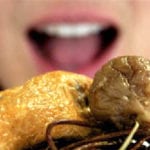 Technology
Technology  Technology
Technology  Humans
Humans 10 Everyday Human Behaviors That Are Actually Survival Instincts
 Animals
Animals 10 Animals That Humiliated and Harmed Historical Leaders
 History
History 10 Most Influential Protests in Modern History
 Creepy
Creepy 10 More Representations of Death from Myth, Legend, and Folktale
 Technology
Technology 10 Scientific Breakthroughs of 2025 That’ll Change Everything
 Our World
Our World 10 Ways Icelandic Culture Makes Other Countries Look Boring
 Misconceptions
Misconceptions 10 Common Misconceptions About the Victorian Era
 Mysteries
Mysteries 10 Strange Unexplained Mysteries of 2025
 Miscellaneous
Miscellaneous 10 of History’s Most Bell-Ringing Finishing Moves
 Technology
Technology Top 10 Everyday Tech Buzzwords That Hide a Darker Past
 Humans
Humans 10 Everyday Human Behaviors That Are Actually Survival Instincts
 Animals
Animals 10 Animals That Humiliated and Harmed Historical Leaders
Who's Behind Listverse?

Jamie Frater
Head Editor
Jamie founded Listverse due to an insatiable desire to share fascinating, obscure, and bizarre facts. He has been a guest speaker on numerous national radio and television stations and is a five time published author.
More About Us History
History 10 Most Influential Protests in Modern History
 Creepy
Creepy 10 More Representations of Death from Myth, Legend, and Folktale
 Technology
Technology 10 Scientific Breakthroughs of 2025 That’ll Change Everything
 Our World
Our World 10 Ways Icelandic Culture Makes Other Countries Look Boring
 Misconceptions
Misconceptions 10 Common Misconceptions About the Victorian Era
 Mysteries
Mysteries 10 Strange Unexplained Mysteries of 2025
 Miscellaneous
Miscellaneous 10 of History’s Most Bell-Ringing Finishing Moves
10 Disgusting Materials Used For Great Innovations
Not all that glitters is gold. In fact, some of the most amazing and revolutionary achievements on the horizon are also the most stomach-churning.
10Diaper Electricity
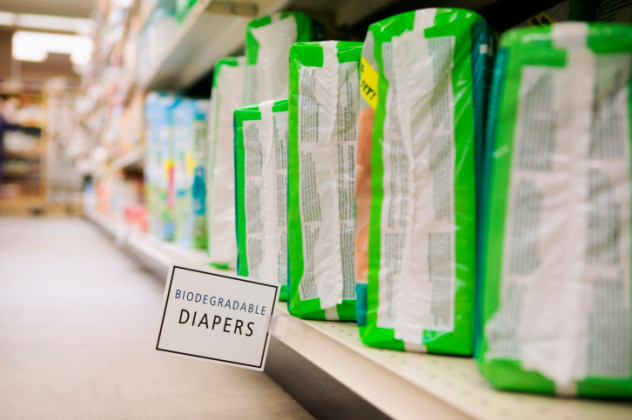
The Japanese are known for having longer life spans. Centenarians are more common among them than anywhere else in the world, and people over the age of 65 make up one-quarter of their entire population. With an almost negative birth rate and the elderly population growing each year, the sale of adult diapers is at an all-time high. Disposing of these used diapers can be quite a problem, since they don’t degrade easily and occupy precious space in the garbage dump. Incinerating them uses up too much fuel and damages the environment.
Luckily, a Japanese company called Super Faiths has designed a new technology that efficiently solves the problem of diaper disposal. The diapers are first placed inside a machine that kills pathogens, after which they are used as a clean fuel for electricity production. The Super Faiths system reduces carbon dioxide emission by 40 tons per year. Several hospitals and elderly care facilities are now using the technology, which saves them money on their electricity bills while reducing their carbon footprint.
9Sewage As Artificial Snow
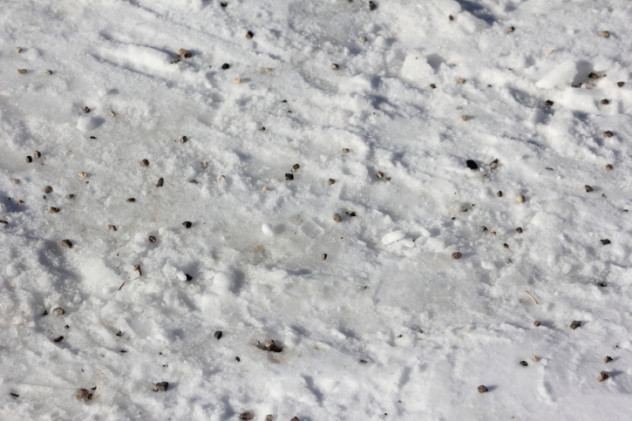
The winter sports industry is big business. In the United States alone, it generates up to $66 billion and thousands of jobs every year. However, with global warming in full swing, ski resorts have been feeling the heat. Dwindling snowfall has become such a problem that experts predict only half of the 103 ski resorts in America will remain open for the next 30 years.
With no immediate answer to climate change on hand, the resorts needed a quick and (literally) dirty solution to their problem. One trick they have up their sleeves is snow-making machines, but making artificial snow requires huge amounts of water and electricity. Since a large part of America is also suffering from droughts due to the changing weather patterns, the use of freshwater is not viable. That’s why some have turned to sewage water.
Although the water is first treated to remove harmful impurities before it passes through the snow-making machines, not everyone is pleased with the sewage snow, since it still contains traces of chemicals and other impurities that may cause health issues. Unfortunately, resorts feel they are left with no other options.
8Feces-Powered Cars

Owning a car can be quite a hassle nowadays. With the unrest in the Middle East, the economic downward spiral of recent years, and the gradual depletion of our oil fields, the cost of gasoline has risen by leaps and bounds, not to mention the very serious environmental impact caused by using oil as an energy source.
With these problems in mind, our best scientists are looking for alternative energy sources to power our cars. Some have suggested electricity, but since a good portion of our electricity still comes from coal and petroleum, the quest for a more sustainable power source continues. In the midst of this crisis, at least one person has thought, “Why not use something that people produce in abundance for free?” This marvelous leap of logic gave us poop power.
Generating power from feces require the manufacturer to first collect some sewage and then remove the solids from the liquids. The solids, or biosolids, are then bombarded with microbes that eat the solids and expel gases (mostly methane and carbon dioxide). The methane then passes through a machine that separates the hydrogen atoms from the carbon atoms. Since hydrogen is highly flammable and burns cleanly, it is a highly effective alternative to fossil fuel.
The Orange County Sanitation District’s Fountain Valley waste facility in California has already tested this new technology and produced excellent results, prompting the car industry to speed up their production of hydrogen-powered cars. In 2005, Hyundai plans to release a vehicle that runs on hydrogen power with more efficient engines that can run smoother and longer, at 483 kilometers (300 mi) per tank. Other major automobile manufacturers are following in their footsteps.
“Wait a minute,” you might ask, “isn’t hydrogen dangerous?” Not quite. Hydrogen may be safer than gasoline in our cars. In a car crash that causes a ruptured tank, gasoline pools on the ground, where it can easily be ignited. On the other hand, hydrogen simply evaporates. Hydrogen is also nontoxic and environmentally friendly, unlike gasoline.
7Fungus Houses And Packaging
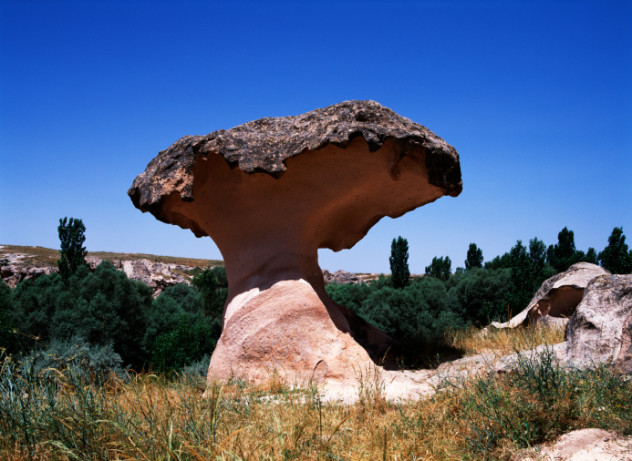
Naturalists have dreamed of the day we can grow our buildings like plants, and it looks like that day may not be far away. Researchers have found a viable material grown from fungus that may soon replace concrete. The amazing new material comes from the thin white fibers, called hephae, that function as its roots. These tiny filaments branch underground and form an amazing network called mycelium. When fungi are packed thickly together, the mycelium forms a tight and compact mass that, when dried and processed, can be used as bricks. What is left is a product that is stronger than concrete, nontoxic, and even resistant to fire and mold.
One company has already started using this new technology to make buildings that are literally grown from the ground up, including this cool-looking tower. Better yet, the material can be used for a broad range of other purposes like replacing plastics and Styrofoams as packaging material, furniture, and even some automotive parts. This will not only reduce our carbon footprint but give us a better product that is cheaper, free of toxic chemicals, and more durable. Products made from this material are even landfill-friendly, since it is biodegradable with the presence of the right microbes.
6Snail Poop Flooring
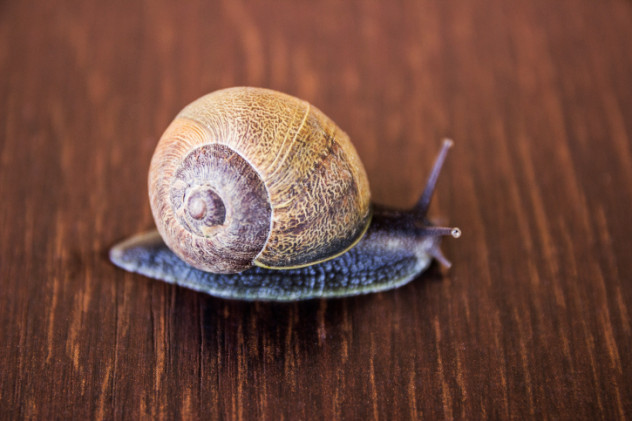
Recycling can only do so much. After four to six trips to the recycling plant, paper can no longer be used. The pulpy remains of the paper are essentially worthless, so they’re tossed into the garbage dump. However, a Dutch designer named Lieske Schreuder may have an innovative solution to the problem: snails and their feces. It works because snails eat vegetation, like mushrooms, grass, and plant bark. Since paper is mainly made out of wood fiber, the snails love nibbling it away.
Schreuder was experimenting with snails when she observed that the feces of snails that were fed colored paper was tinted the same color, since its body rejects the pigments. She also found that snail poop, when pressed and dried, can be turned into tiles perfect for flooring. Employing thousands of snails and experimenting with a variety of colors, Schreuder has produced a wide array of tiles in vibrant hues. This technology extends the useful life of paper with minimal ecological damage and puts snails to good use.
5Urine Energy Drinks

One particular problem for astronauts living in space is their drinking water. Since rockets can only carry a limited amount of cargo to space, water is a scarce resource up there, so our space explorers are forced to recycle in strange ways. Space stations already have a complicated system in place to convert the astronauts’ urine, sweat, respiratory moisture, and laundry water into something drinkable. That might sound gross, but the quality of this water actually far exceeds what we drink here on Earth.
But drinking nothing but recycled water for months on end can be tedious. For some variety, as well as a dose of much-needed minerals, NASA developed a new system that converts urine into an energy drink. With a process called forward osmosis, the urine is forced through a membrane that separates the water from the gross stuff before mixing it with sugar and other standard energy drink ingredients.
Since this process requires no electricity, works with any liquid, and involves user-friendly equipment that can be packed in a single bag, its practical application is seemingly endless. Soldiers can carry it with them during missions, allowing them to carry fewer supplies into battle and keeping them there as long as it takes to get the job done. Adventure-seekers can also bring it with them on trips where drinkable water is scarce. It could even be sent to areas experiencing natural disasters or other emergencies, where water supplies are damaged or polluted.
4Natural Vanilla Flavoring
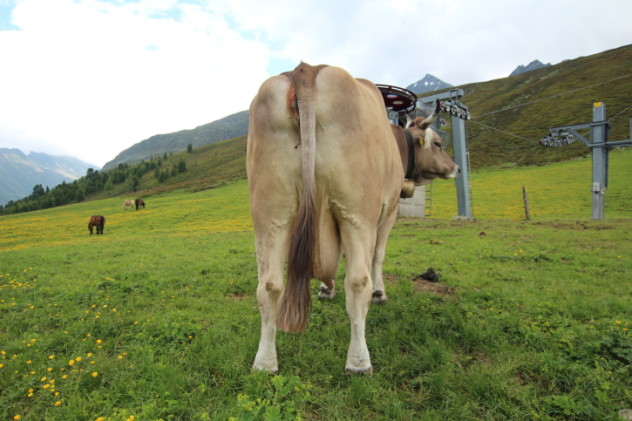
As far as flavors and fragrances go, vanilla is as iconic as chocolate and coffee. But unlike those extracts, which come from tree seeds, vanilla comes from orchid pods of the genus of the same name. Growing orchids is not as easy as growing trees, as they are more vulnerable to the whims of the weather and the ravages of pests. Due to the low supply and high demand for vanilla, businesses who wanted to keep their prices down began looking to food scientists for cheaper sources.
Vanillin, the organic compound primarily responsible for vanilla’s distinctive flavor and fragrance, was first synthesized on a large scale during the 1930s from lignin, which is derived from pine tree pulp. In recent decades, synthetic vanillin has been produced from petrochemicals, which are generally not viewed in a positive light. The market for vanillin alternatives was wide open.
The first naturally sourced alternative, aside from wood pulp, was castoreum, which is taken from the anal scent glands of beavers. This substance is actually used for an alarming number of commercial purposes, including raspberry and strawberry flavoring. It is even used in cigarettes for that distinctive odor. However, since the beaver population is dwindling and extracting castoreum from a beaver without killing it is hard work, this substitute never really took hold in the vanilla industry.
Despite many major setbacks, though, a green solution to the vanilla dilemma has finally been identified, thanks to Mayu Yamamoto of the International Medical Center of Japan. She designed a method for creating vanillin out of an abundant, environmentally friendly, and renewable resource: cow dung. It turns out that lignin is abundant in cow poop, and as an added bonus, the process of extracting it is far cheaper and takes less time than traditional methods and sources. She was even awarded an Ig Nobel prize for her research. Unfortunately, the vanilla industry doesn’t seem too keen on using it in their products, dashing any hope we might have for vanilla cow dung milkshakes in the near future.
3High-Tech Future Food
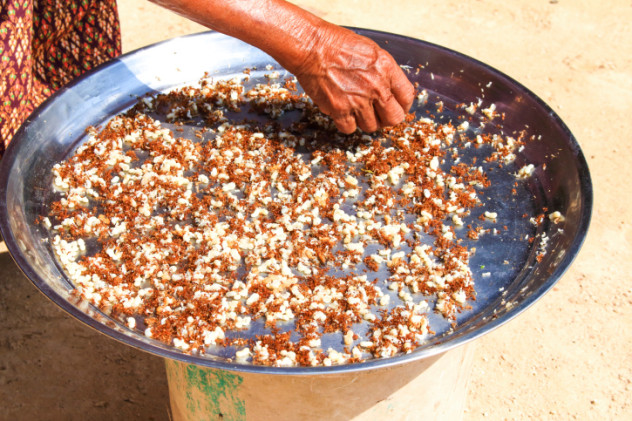
As of 2012, the world population clocked in at more than seven billion. By 2024, we will reach eight billion, and nine billion by 2050. Barring any cataclysmic event that will substantially reduce our population, all those extra people to feed will put considerable strain on the environment and further reduce already scant resources. With this in mind, some people are starting to look for alternative food sources to help stave off future hunger.
One of the most promising (and also the most disgusting) alternative food sources currently being studied is insects. To their credit, they are good sources of nutrition, and they can be bred quicker and cheaper than cows or pigs. Raising livestock is also ecologically harmful, since cattle release an astonishing amount of carbon dioxide into the atmosphere, making bugs a greener choice. Some parts of Asia and Africa already have little critters on the menu, but for the rest of the world, the thought of putting a creepy crawly in our mouths is a daunting prospect.
Researchers from London South Bank University are working on adding new technology into the mix with the hope of easing the public’s anxiety about eating bugs. In the procedure they’ve developed, the bugs are first ground into powder and then combined with other ingredients, after which the mixture is processed through a 3-D printer, resulting in cool and enticing edible designs. They hope that changing the appearance of the food from ghastly bugs to hip-looking treats will leave consumers with a better impression, encouraging them to try bugs as part of their daily diet.
2Foreskin Everything
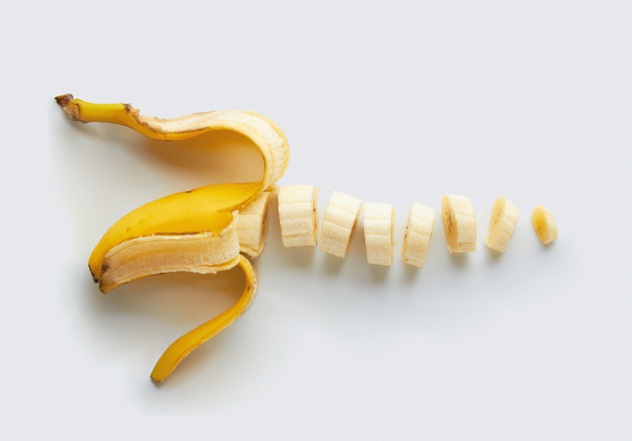
Throughout human history, foreskin and the question of whether to keep it or lop it off has been a contentious issue. The Romans adored foreskin, even condemning a consul to death for having himself circumcised. The Greeks, too, were fans, known to tie them up during the Olympic games because the sight of the tip of the penis was considered offensive. The descendants of Abraham, on the other hand, preferred having them snipped off to signify their covenant with God, and Christians soon followed this tradition. One story in the Bible even tells of God trying to kill Moses because his son was uncircumcised. The debate continues to this day as scientists argue the merits of both positions.
What this has to do with scientific advancement mostly concerns what happens to foreskin after it’s removed. For the most part, it’s just thrown out with the trash. Sometimes, though, foreskin is saved for the many useful purposes it can serve, especially if it comes from a newborn baby. Scientists can use newborn foreskin to grow up to four acres of new skin that can be used for skin grafts. Taking a burn patient’s own skin can be a painful procedure that often doesn’t furnish the needed amount of skin, so newborn foreskin is now a common addition. Furthermore, foreskin cells are less likely to cause infection and be rejected by the patient’s body than other kinds of donated skin.
The benefits of baby foreskin don’t stop there, either. It’s also a common ingredient in anti-aging products that promise to keep wrinkles away. Foreskin is a good source of fibroblast cells, which produce the skin-firming proteins collagen, elastin, and hyaluronic acid. Anti-aging products created from foreskin are so effective that one even got Oprah’s seal of approval.
1Vaccines From Aborted Fetuses

In the early ’60s, a seemingly insignificant event changed the world and saved countless lives. Two women, one from England and one from Sweden, decided to have abortions. What made this unfortunately common event notable is that certain cells taken from the fetuses were sent to two research facilities, Medical Research Council and the Wistar Institute, respectively. The cells were used as the foundation for vaccine research that produced vaccines for rubella, polio, rabies, chickenpox, hepatitis A, and many more. More than 40 years later, these two sets of fetal cells are still used in research for life-saving medicines.
Creating vaccines for viruses rather than bacteria is tricky, since viruses only grow inside cells. Adult human cells for are not viable for such research, since cells from organs that are already fully developed can only replicate about 50 times before they die. Fetal cells, on the other hand, are essentially immortal, with the ability to replicate seemingly indefinitely. They are also sterile, making them ideal research material.
Petros Absalon is a freelance writer who thinks that life can be quite amazing if you look at it from the right perspective. You can read more of his writing on his blog.
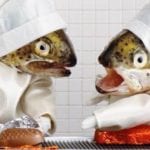
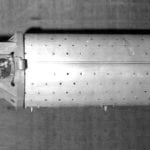

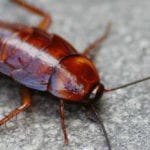

![Top 10 Disgusting Foods The Chinese Eat [DISTURBING] Top 10 Disgusting Foods The Chinese Eat [DISTURBING]](https://listverse.com/wp-content/uploads/2020/03/23773182-0-image-a-46_1580303417295-150x150.jpg)

